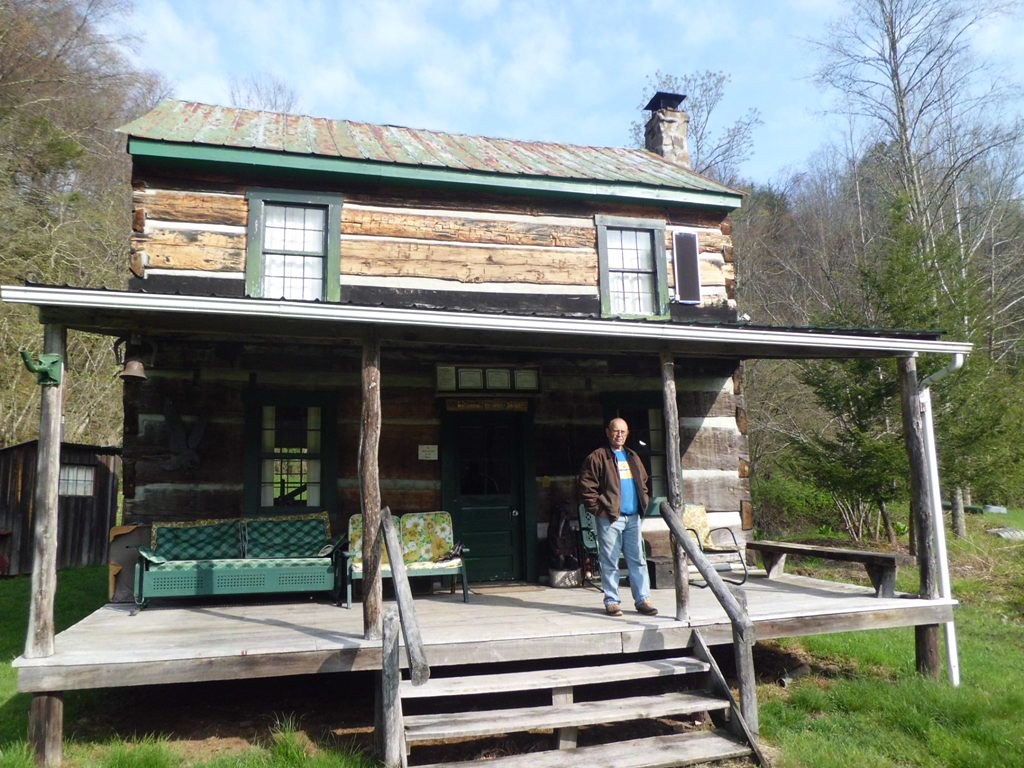Fishing the Mountain Streams
When spring arrives and the weather begins to get warmer in the Allegheny Mountains along U.S. Route 219, many locals and visitors grab their rods and reels and begin heading to the Monongahela National Forest. Some of the best trout fishing in the region can be found here in these cool mountain streams. Fishing has long been part of the local culture, and angling—or sport fishing—has become a popular pastime in more recent memory. Curtis Curry was born and raised near Marlinton, in Pocahontas County, West Virginia, and he’s written a book about growing up and fishing on the streams here.
“So, my dad and my uncle were avid fisher men and they took me with them beginning probably andCurtis as a child, holding a trout catch on a trip out to the mountain streams. From his book The Williams. I was seven or eight years old,” remembers Curry.
“Well, it was quite different back in the late 30s and early 40s. There weren’t so many roads on the Williams River that I write about, there was no road up the river like there is now. You had to walk several miles to a camping area, fishing area and the streams were kind of pristine at the time. The limit for trout in those days was 15 and now it is six. And you could easily catch your limit of native fish on the headwaters of most of the streams. But, throughout the county the streams were, a lot of them were remote and you could probably fish all day without seeing someone else.Again, they were rather primitive conditions that we would go out and camp for several days and carry all of our gear several miles and sleep on the ground in a tent. Things like that, that people seldom do now. But, it was quite an experience. It was quite wild…”
- Curtis on a more recent trip to the stream. From his book The Williams.
Doctor Ernie Shaw grew up on the Elk River and has been fishing his entire life on the streams of Pocahontas County. I met Doctor Shaw on Stoney Creek, near Marlinton, where he and his friends own a cabin for fishing and hunting that they also rent out to visitors.
“Oh, my goodness. I’ve been fishing forever. Fishing forever. The first place that we, I lived was, oh, like half way between Slaty Fork and Linwood. And big spring fork of the Elk River came right through our home and, well, we had a fishin’ pole laying at every hole with a string on it. And so, we fished everyday! Three or four times. Then we moved up to Crooked Fork — I was in high school. Used to be an opening season at the time and you had to go fishing on opening day of the season. I had an old buddy that, oh goodness, we worked like crazy to get ready to go fishing on opening day. Usually around the 15th April was when it came in and you could get snow, all kinds of stuff.  That old buddy I mentioned a while ago, we start off, we were going to fish a new stream every year. After about six or eight years, why I says ‘you know, we are going to have to speed up or we’re not going to get them all.’ So, for another 15 years we fished two or three new streams each year and I still haven’t got them all! You get up against the side of the mountain anywhere and every little place, little hollow, little valley, cow track, got water coming out of it. Particularly in the spring! They’re just, they’re everywhere! And somebody put nice little brook trout in them, and an awful lot of them. I wouldn’t go anywhere else on a bet!”
That old buddy I mentioned a while ago, we start off, we were going to fish a new stream every year. After about six or eight years, why I says ‘you know, we are going to have to speed up or we’re not going to get them all.’ So, for another 15 years we fished two or three new streams each year and I still haven’t got them all! You get up against the side of the mountain anywhere and every little place, little hollow, little valley, cow track, got water coming out of it. Particularly in the spring! They’re just, they’re everywhere! And somebody put nice little brook trout in them, and an awful lot of them. I wouldn’t go anywhere else on a bet!”  It’s been decades since the days when Ernie Shaw and Curtis Curry learned to hook their first fish, and they’ve certainly witnessed some changes in the fishing culture over the years. But both of them remain avid anglers who continue to fish many of the same streams they grew up on so many years ago.
It’s been decades since the days when Ernie Shaw and Curtis Curry learned to hook their first fish, and they’ve certainly witnessed some changes in the fishing culture over the years. But both of them remain avid anglers who continue to fish many of the same streams they grew up on so many years ago.
Category: Blog, Collections, Family & Community, Marlinton to Lewisburg, Stories





























